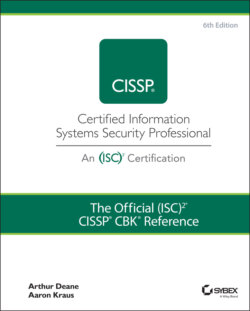Читать книгу The Official (ISC)2 CISSP CBK Reference - Leslie Fife, Aaron Kraus - Страница 110
Candidate Screening and Hiring
ОглавлениеCandidate screening and hiring the right employees is a critical part of assuring the security of your company's systems and data. Not only do you need to make sure to hire the right fit for the job, but it's also critical that you are familiar with a candidate's background and history before bringing them into your organization and giving them access to your sensitive information.
There are a couple things your organization must do before beginning to recruit candidates for a position. First, the hiring manager should work with HR to clearly and concisely document the job description and responsibilities. Having a job description with well-documented responsibilities can help you recruit the right person for the job and can later be used as a measuring stick to assess the employee against the expectations set before they were hired. Next, you should identify the classification or sensitivity of the role, based on the level of damage that could done by a person in that role who intentionally or negligently violates security protocols. The classification or sensitivity assigned to a role (referred to as a risk designation by NIST, for example) should inform the types of authorizations an employee will receive once they are hired; as such, the thoroughness of your candidate screening process should match the security of the position that you're filling. As a CISSP, risk designation (or the equivalent in your jurisdiction) should be considered prior to granting any employee access to sensitive information.
Once a potential employee or contractor is identified, your organization should verify the information in their application and confirm their suitability for the position by conducting a background check. Generally speaking, an employment background check may include the following checks and verifications:
Education
Work history
Citizenship
Criminal record
Credit and financial history
References
In addition to the previous list, candidate screening may include drug testing and/or further investigation for highly sensitive roles, or positions requiring a special security clearance (this is especially relevant for employment with a government agency). As a CISSP, you should ensure that your organization has policies and procedures in place to screen and hire candidates in accordance with any relevant regulations in your jurisdiction.
NOTE While background investigations used to be strictly handled by organizations specifically created to conduct them, many employers have added online background screening to their standard procedures. In these circumstances, an employer may choose to research a potential candidate's social media and online presence to gain a fuller picture of that person's attitude, intelligence, professionalism, and general character. Organizations should have clear policies that define the appropriate uses of internet and social media research, standardize which information is to be taken from the social media sites, verify the accuracy of the information, and disclose to applicants the potential use of internet and social media in deciding which applicants to consider.
